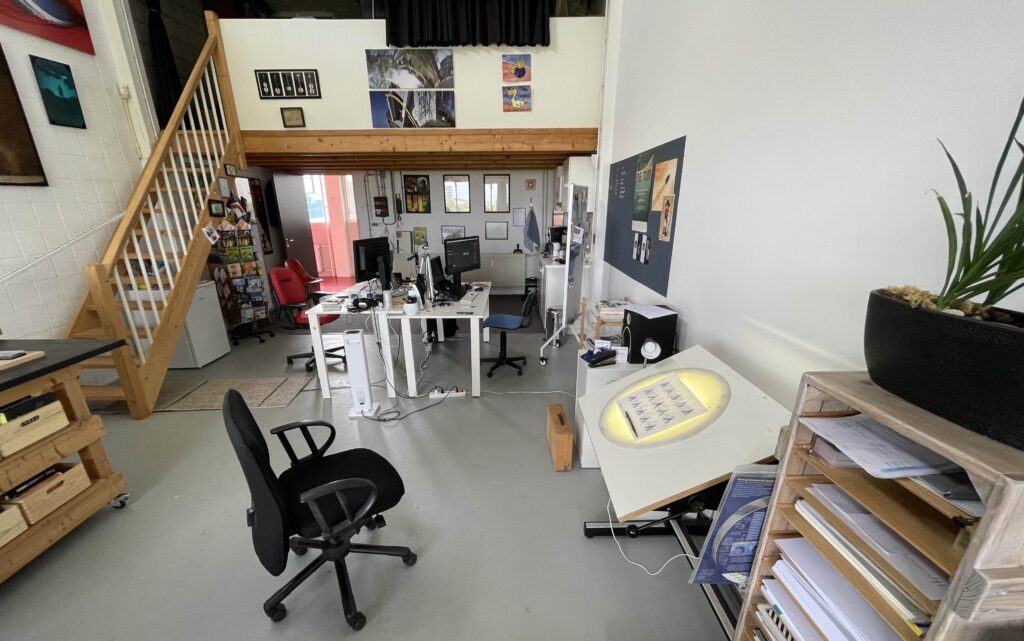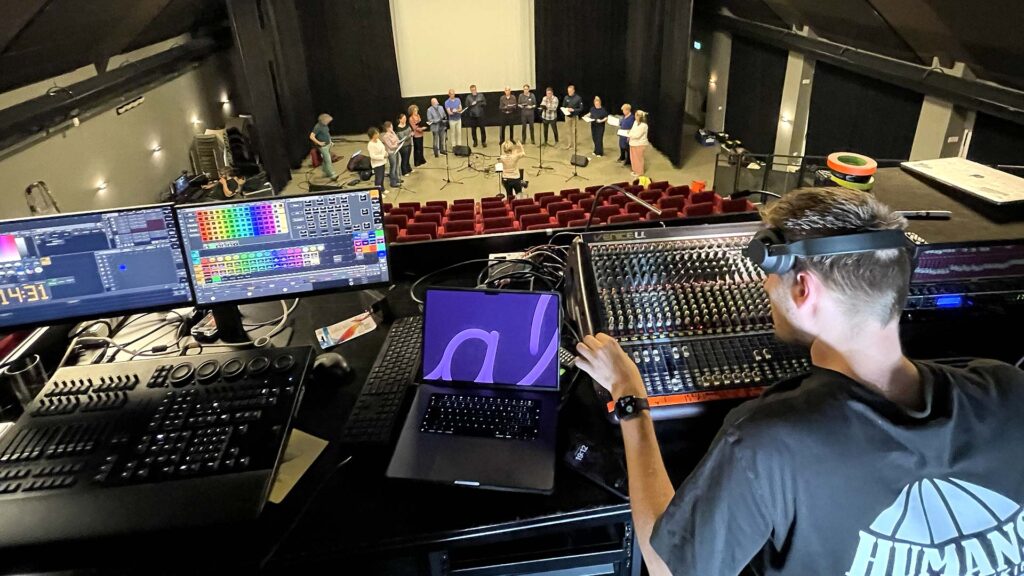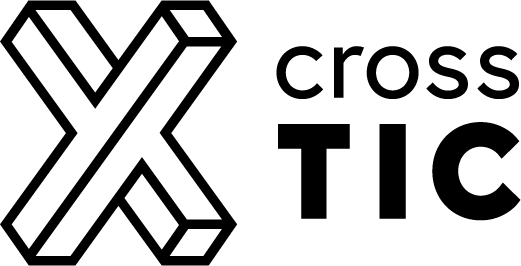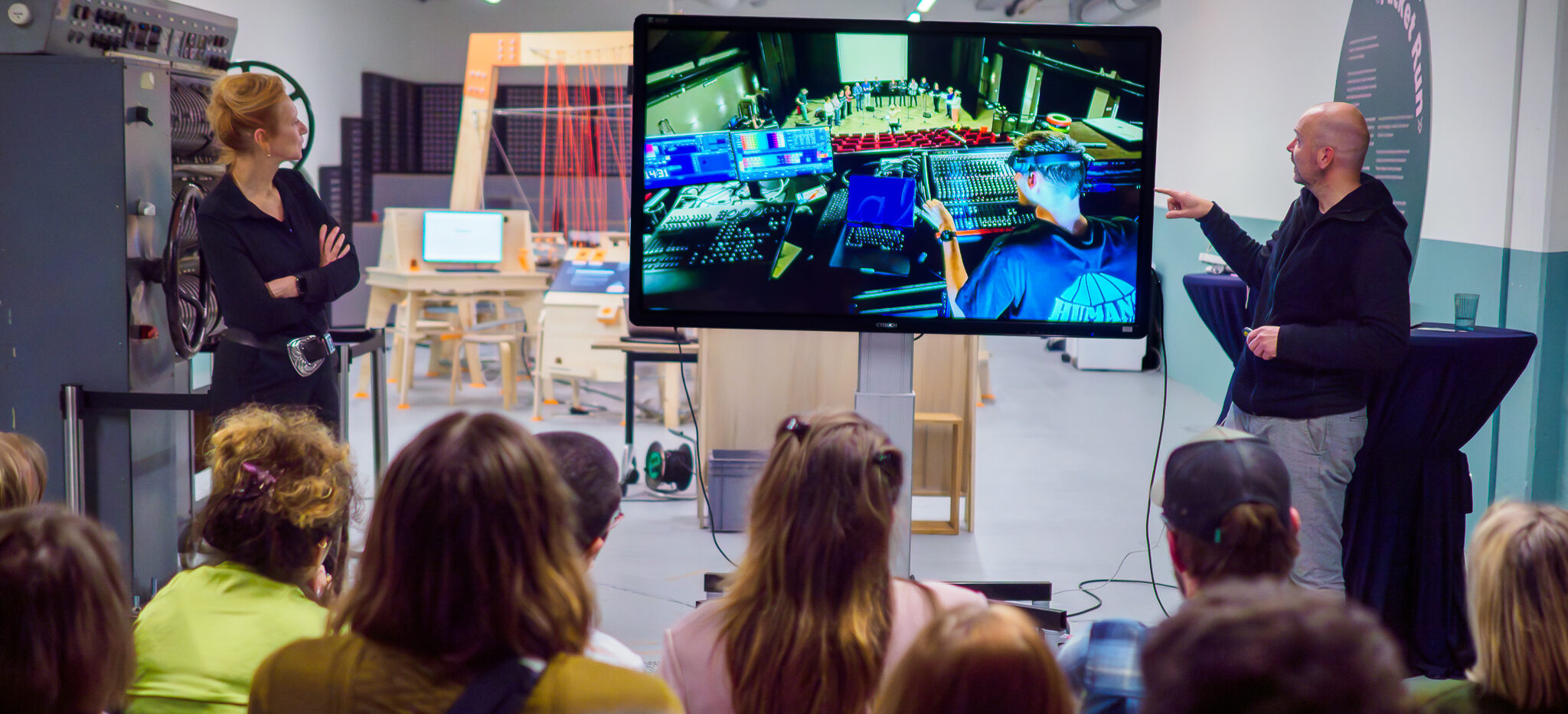Udo heeft dit jaar aan een productietraject gewerkt waarin hij de crossmediale muziekvoorstelling Conducting Colors maakte in samenwerking met Eric Vloeimans en het Bachwerkplaats koor onder leiding van Yt Nicolai. Hij heeft met gebruik van reactieve technologie de beweging van de dirigent en de muziek gevisualiseerd, als onderdeel van de verbeelding van thematiek rond Noaberschap. Anita Elkink, zijn coördinator vanuit Stichting Heerlijk Heimland, stelde hem een aantal vragen tijdens de Cross-TIC showcase bij Oyfo op 6 oktober.
Anita:
Wil je jezelf introduceren en vertellen over je werk?
Udo:
Tijdens mijn studie animatie aan de Hoge School voor de Kunsten Utrecht heb ik nog traditionele technieken geleerd zittend achter een tekentafel, werkend op papier. Tegelijk kreeg ik ook les in programmeren en creatieve technologie, deze combinatie heb ik eigenlijk nooit meer losgelaten. Ik ben opgegroeid vlakbij Twente, wat een mogelijke reden is waarom ik werd uitgenodigd om deel te nemen aan dit traject met thematiek Noaberschap, wat in korte omschrijving gaat over mensen die er voor elkaar zijn in voor en tegenspoed. Ik wilde graag samenwerken met trompettist Eric Vloeimans in combinatie met een koor, dat werd het lokale Bachwerkplaats koor o.l.v. Yt Nicolai. Samen met techniek ter plaatse, Creatief Technoloog Jonah Wintrich-Rathge en aanvullende animatie assistentie hebben we een optreden van 30 minuten verzorgen tijdens het Heimland Festival in juni.
Anita:
Hoe kwam deze Cross-TIC Open Call onder jouw aandacht?
Udo:
Ik denk dat social media haar werk heeft gedaan, dus petje af voor Cross-TIC; jullie hebben mij goed weten te bereiken. Het verscheen gewoon in mijn feed en ik vond het direct interessant, ook omdat het in het oosten was en ik daar ook vandaan kom. De randvoorwaarden van de Open Call waren erg interessant, een match met hoe ik zelf graag een voorstelling zou willen maken.

Anita:
Wat zien we hier?
Udo:
Dit is een foto van mijn studio. Ik wilde deze foto tonen om het spectrum van mijn werk te laten zien. De basis is vaak analoog, met referentie naar de tekentafel waar ik nog 2D getekende animatie mee kan maken en voorbereiden. Verderop staat de apparatuur, waarmee ik deze ananologe werken kan vertalen naar een digitale wereld, of de het digitale direct kan uitvoeren via reactieve animatie technieken. Boven mijn studio heb ik nog een ruimte die donker te maken is waar ik een ander gedeelte van mijn werk kan uitvoeren, lange sluitertijd fotografie. En ook specifiek solargrafie, het opnemen van zonnebanen met custom made camera obscura’s
Anita:
Hoe heb je het maakproces van je project ervaren?
Udo:
Toen ik werd geselecteerd was ik heel blij, maar ik dacht ook: “Waar ben ik aan begonnen?” het zou wen flinke puzzel worden. Er was een productieperiode van drie a vier maanden, dat is best krap, maar ik had al een aantal dingen op de rails staan. We begonnen eerst te praten over het festival, wat we konden realiseren en wat ik wilde doen. Met alle verhaallijnen die ik in gedachten had kon ik dit via de archieven van Diepenheim uitzoeken en verbinden met het thema van het festival. Ik had de droom om Eric Vloeimans, een bekend en gerenommeerd trompettist, te vragen. Met hem erbij kon ik mezelf en de voorstelling naar een hoger niveau tillen en veel bijleren over concept en muziektheater regie. Eric was beschikbaar en samen met hem en onder begeleiding van het festival ging ik op zoek naar mensen die konden weerspiegelen wat ik wilde creëren én dit binnen gestelde periode konden helpen realiseren. Dit was even wennen want ik ben iemand die graag snel vooruit wil, Eric en jij (Anita) hielpen mij in te zien dat je soms een stap terug moet zetten en ervoor zorgen dat de basis goed is voordat je verder gaat.
“Soms moet je een stapje terug doen en ervoor zorgen dat de basis goed is voordat je het creatieve proces uitrolt.”
Anita:
Wat was het hoogtepunt in het geheel? En wat viel tegen?
Udo:
We hadden drie tot vier maanden om dit hele project te maken, dat is naast een creatieve ook een logistieke uitdaging. Het mooie was dat ik door de opzet van het programma al die maanden fulltime aan het project kon werken. Ik heb tot nu toe niet vaak aan projecten kunnen werken waar ik me maandenlang volledig op kon storten. Dat was, samen met het werken met het geweldige team die de productie mogelijk hebben gemaakt, een fantastische en leerzame ervaring. Eric Vloeimans en dirigente Yt Nicolai staan in voor kwaliteit en wilden die reputatie bewaken, iets dat ik hen ook had opgedragen mij daar hard op aan te spreken. De locatie van de voorstelling was bijvoorbeeld voer voor gesprek. De plek waar we aan toegewezen waren om te spelen is een zogenaamde ‘droge’ theaterzaal. Wil je daar goed klinken met een koor en trompet, dan moet het goed en professioneel versterkt worden. Om dit te realiseren kostte wat tijd, ook omdat het festival gelijktijdig nog met eigen planning bezig was. Het was best moeilijk om op tijd alle mensen op de crewlist te krijgen voordat we creatief aan de slag konden.
Anita:
Hoe ervaarde je de performance op het Heimland Festival?
Udo:
Het was echt gaaf. We hadden twee avonden met een volle zaal. Ik kon zeker achterover leunen en ervan genieten want als de show eenmaal begint, kan je niet veel meer bijstellen. De eerste avond hadden we een kleine ‘glitch’ op het scherm door een connectie van een kabeltje, maar de tweede avond verliep alles perfect. Stressvol was het wel, want eigenlijk is een eerste en tweede performance nog een try-out, maar wij moesten dit ‘premiere’ noemen en dat met eigelijk maar heel weinig repetitietijd samen. Alle voorbereide elementen zoals muziekrepertoire, animatie, technologie en decor kwam samen na een paar dagen werk in het theater.
Anita:
Wat neem je mee vanuit dit traject? En wat wil je nog met ons delen?
Udo:
Ik denk dat factor tijd belangrijk is. Dat is iets wat ik heb geleerd: mezelf echt de tijd gunnen om dingen voor te bereiden. We willen vaak zo snel mogelijk beginnen met de uitwerking als het om dit soort projecten gaat, maar soms moet je een stapje terug doen en ervoor zorgen dat de basis goed is voordat je het creatieve proces uitrolt. En dan ren je gezamenlijk vooruit.

Bekijk hier een opname van Udo’s voorstelling Conducting Colors.

